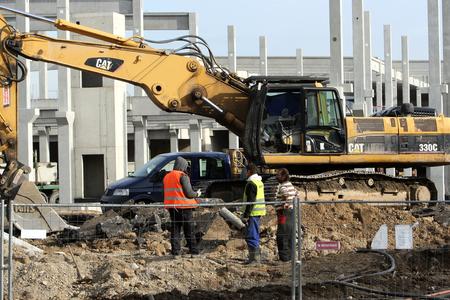The European Commission in its latest economic forecast has altered its expectations of Slovakia’s GDP growth to 2.9 percent in 2017 when compared to its autumn prognosis of 3.2 percent.
Meanwhile, Slovakia’s economy is expected to expand by 3.6 percent in 2018, the TASR newswire reported.
As for 2016, the EC estimates that Slovakia’s real GDP rose by 3.3 percent, slightly less than in 2015. The growth was mainly due to strong net exports and accelerating household consumption, while falling investment had a converse effect.
“The modest slowing of GDP growth masks a sharp turn in Slovakia’s investment cycle in 2016, in which EU-funded investment fell at the start of the new programme period,” the EC stated, as quoted by TASR.

While public investment contracted particularly sharply in 2016, so did import growth due to the high import intensity of fixed investment in Slovakia, according to the EC.
“Coupled with a solid rise in exports, this generated a strong positive contribution by net exports to GDP growth, which was bolstered further by faster growth in household consumption,” the EC added.
Overall investment spending in Slovakia is expected to begin growing again in 2017, and even to accelerate further in 2018, stated the EC, ascribing the projected developments to booming investment in the car industry, most prominently regarding the construction of a new Jaguar Land Rover plant in Nitra and an expected increase in public investment spending, which includes the building of the Bratislava motorway bypass.
With economic activity expected to continue growing at a sound rate, the labour market is likely to benefit via sustained job creation.
“The unemployment rate declined to 9.7 percent in 2016, and it’s set to fall further to some 8 percent in 2018, reflecting continued economic expansion,” the EC stated, as quoted by TASR.
Meanwhile, inflation is set to turn positive in 2017 after three years of declining consumer prices.
“Acceleration in food and service prices is set to become the main driver of overall price recovery, allowing Consumer Price Index inflation to rise to 0.9 percent in 2017,” reads the winter forecast, as reported by TASR.
The public administration deficit is estimated to have declined by 0.5 percentage points to 2.2 percent of GDP in 2016, and the EC believes that it will drop to 1.4 percent of GDP in 2017 and further to 0.6 percent of GDP in 2018.



 The construction site of Jaguar Land Rover near Nitra (source: SME)
The construction site of Jaguar Land Rover near Nitra (source: SME)